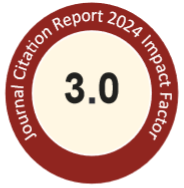Abstract
It is important to develop rapid methods to detect the presence of histamine producers. In this study, the polymerase chain reaction (PCR) assay yielded a 367-bp DNA amplification fragment from histidine decarboxylase (hdc) of gram-positive bacteria using JV16HC/JV17HC primer, and 534-bp and 709-bp DNA amplification fragments from histidine decarboxylase of gram-negative bacteria using 106/107 and hdc-f/hdc-r primers, respectively. Seven gram-positive histamine-producing strains and 15 gram-negative histamine-producing strains isolated from Taiwanese foods successfully produced the PCR amplification products. The minimum levels of detection of Enterobacter aerogenes or Raoultella ornithinolytica after the PCR amplification using hdc-f/hdc-r and 106/107 primers were 105 and 106 CFU/mL in TSB broth, and 106 and 107 CFU/g in marlin homogenates, respectively. The hdc amplification using hdc-f/hdc-r primer was detected 2 h earlier than the HPLC detection of histamine in TSBH broth or marlin homogenates inoculated E. aerogenes or R. ornithinolytica. However, the detection of hdc amplification using the 106/107 primer and that of histamine by HPLC occurred at the same sampling time. Therefore, the PCR method could be easily used to detect potential histamine-producing bacteria in foods.
Recommended Citation
Kung, H.-F.; Lee, T.-M.; Lin, C.-S.; Hong, T.-Y.; and Tsai, Y.-H.
(2012)
"Polymerase chain reaction for the detection of histamine-producing bacteria isolated from Taiwanese foods,"
Journal of Food and Drug Analysis: Vol. 20
:
Iss.
1
, Article 6.
Available at: https://doi.org/10.38212/2224-6614.2060

